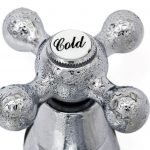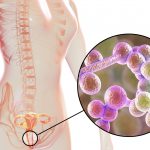Taurine: The Essential, Non-Essential Amino Acid for Women
Carolyn Mercer BSc, ND
Taurine is often referred to as a non-essential amino acid (technically an amino sulfonic acid: 2-aminoethane sulphonic acid). It can be synthesized in humans from the amino acids, cysteine and methionine. As one of the most abundant free amino acids in many tissues, including skeletal and brain, it comprises over 50% of the total free amino acid pool of the heart.1 Taurine is a major component of healthy bodies, with a 70-kg human containing as much as 70 grams of taurine.2
However, certain diets, particularly vegetarian and vegan diets, lack adequate amounts of taurine.3,4 Under stress, the taurine synthesis capacity may be impaired, and hence disease states – including liver, kidney, or heart failure; diabetes; and cancer – can all cause a deficiency in taurine.5-7 As we age, our bodies typically fail to produce optimal amounts of taurine.8aurine is often referred to as a non-essential amino acid (technically an amino sulfonic acid: 2-aminoethane sulphonic acid). It can be synthesized in humans from the amino acids, cysteine and methionine. As one of the most abundant free amino acids in many tissues, including skeletal and brain, it comprises over 50% of the total free amino acid pool of the heart.1 Taurine is a major component of healthy bodies, with a 70-kg human containing as much as 70 grams of taurine.2
Why is Taurine Important?
Unlike most amino acids, taurine is not a structural component of any proteins. Its benefits are so broad and extensive that scientists have described taurine as “a wonder molecule.”9 Taurine is essential in early human development, and low levels of taurine are associated with cardiomyopathy, retinal degeneration, and growth retardation.5 Metabolically, taurine is involved in: bile acid conjugation, detoxification, membrane stabilization, osmoregulation, and modulation of calcium levels. Clinically, taurine has been used in a wide variety of conditions, including: cardiovascular diseases, hypercholesterolemia, epilepsy and other seizure disorders, macular degeneration, Alzheimer’s disease, hepatic disorders, alcoholism, and cystic fibrosis.5
Female vs Male Taurine Considerations
Taurine is clearly implicated in many aspects of general health. However, health conditions may affect men and women differently. Many health issues affect only women, and some are more prevalent in women. Risk factors and naturopathic preventive strategies therefore differ for women.10 Taurine may provide us with insight into some of these differences (Table 1).
Clinical Observation
Plasma taurine concentrations in omnivorous humans vary from 38 to 116 µmol/L.17 The differences in levels of women vs men have not been well-documented in the scientific literature.
A leading clinic and lab in Ottawa, Ontario, Canada, measures and then balances amino acid levels of both healthy and chronically-ill clients as a part of a clinical approach to determine and improve an individual’s metabolic and immune system well-being.18 For over 2 decades and 10 000+ clients, this lab has observed low taurine levels in chronically-ill clients, particularly women. In a non-controlled, case-series analysis, the lab reviewed the plasma taurine levels of 800 clients. The subjects were randomly chosen adults (50/50, women to men), of all ages and varying in health conditions from well to chronically ill, that had visited the clinic from August of 2013 through August of 2014.
The case-series analysis results are coincident with the clinic’s clinical observations (Table 2). Overall, women had 11.4% less plasma taurine than men. One possible explanation for this observation is that these women generally had lower overall total free amino acids in their plasma. This proved true in looking at the total plasma concentration of 24 essential and non-essential amino acids. Women were shown to have 2.6% lower levels of total plasma amino acids as compared to men. This seems intuitive, since men are generally larger than females. Indeed, the plasma volume per kg of body weight is 2.5% lower in women than men.19
In proportionately accounting for this body size difference by looking at the percentage of taurine to total plasma amino acids, women still demonstrated 9% less taurine than men (percentage of taurine to total amino acids) (Figure 1). Therefore, the most likely explanation is that women in this clinical setting do indeed have proportionately lower taurine plasma levels than men. The scientific and clinical logic behind this difference is further explored in the following sections of this paper.
Taurine Metabolism and Synthesis Implications
Female Hormone Effects
Women are more at risk for a taurine deficiency because of the presence of female hormones that restrict the production of taurine within the body. Normally, reasonable amounts of taurine are synthesized in the human body from cysteine. The female hormone, estradiol, depresses the formation of taurine in the liver. Women who are on estrogen replacement, birth control pills, or are suffering from excessive estrogen may need extra taurine.20-25
Vegetarianism
More women than men are vegans or vegetarians. Taurine is virtually absent in most plant foods.3 Vegans have been shown to have approximately 22% lower blood levels of taurine than non-vegetarians.26 The rate of taurine synthesis is inadequate to maintain normal plasma concentrations in the presence of chronically-low intakes of taurine precursors and/or cofactors.7,26
Maternal and Child Health
Taurine is an essential amino acid for neonates, since they have a limited capacity for its synthesis due to enzymatic immaturity. Also, due to the immature kidney in neonates, there is a relative inability to conserve taurine.27 Taurine is stored in the maternal tissues in early pregnancy for later transfer to the fetus in order to satisfy the needs of the fetus and the suckling infant for this amino acid. In human milk, taurine is the most abundant free amino acid (40 µmol/100 mL of milk). Low neonatal taurine status adversely affects later neurodevelopment of preterm infants.28 Reports indicate an increased incidence of pediatric health issues in children from vegan communities who consume little to no taurine.29,30
Alcohol, at moderate to heavy levels, reduces the transport of taurine from mother to baby via the placenta.31 This is one possible variable explaining some of the consequences of drinking during pregnancy.
Female reproductive tract fluids contain high concentrations of taurine, suggesting that taurine plays a role in pre-implantation embryo development.32,33
Candida
Yeast infections are caused by overgrowth of the fungus Candida albicans. Candida produces beta-alanine as a byproduct of protein digestion. Animal studies have demonstrated that beta-alanine competes for reabsorption with taurine in the kidneys, thereby lowering taurine levels.34
Female-Specific, Taurine-Related Health Condition Variables
Cardiovascular
Taurine is highly implicated in many aspects of cardiovascular health:
People with higher levels of taurine have significantly lower rates of dying from coronary heart disease35
Taurine is a potential therapeutic target for cardiovascular diseases, preventing hypertension, stroke and atherosclerotic arterial diseases36
The authors of a double-blind, placebo-controlled, crossover study suggested, “taurine is an effective agent for the treatment of heart failure without any adverse effects”37
The accumulation of taurine in heart muscle under stress is thought to reflect the net uptake from plasma and not result from in situ biosynthesis. Again this indicates that taurine is an essential amino acid under various circumstances.38
Administration of taurine has been shown to reduce serum cholesterol levels in human subjects39
Osteoporosis
Bone tissue contains high amounts of taurine. Taurine stimulates bone formation. Second, it inhibits bone resorption, thereby preventing alveolar bone loss.40 Recent research shows that vitamin B12 plays a role in regulating taurine production and that taurine regulates the production of new bone cells.41
Gestational Diabetes Mellitus (GDM)
Taurine is related to glucose tolerance, insulin sensitivity, and insulin secretion in subjects with a history of β-cell dysfunction, such as women with history of gestational diabetes. Plasma taurine is significantly lower in women who have experienced GDM.42 Taurine concentrations are generally lower among diabetics than among healthy individuals43; however, these levels can be raised back to normal with oral taurine supplementation.5
Data is accumulating regarding the effectiveness of taurine against insulin resistance, diabetes mellitus, and its complications, including retinopathy, nephropathy, neuropathy, atherosclerosis, and cardiomyopathy.44
Gallstones
The gallbladder stores bile that is produced in the liver, and aids in the digestion of fats in the small intestine. Gallbladder disease is especially common among women who are receiving estrogen replacement therapy, since estrogen stimulates the liver to remove more cholesterol from blood and divert it into the bile and, hence, the production of gallstones. Bile is made of bile acids and bile salts. Taurine is a major component of bile acids and helps to keep bile salts dissolved. When there is a deficiency of taurine, there is less bile acid, and thus the salts are able to form stones.45 Taurine has been shown in animals to have a protective effect against gallstones.46
Depression
Through its role in calcium metabolism in the brain, taurine plays a major part in the release of neurotransmitters. Taurine may inhibit the release of excitatory neurotransmitters such as epinephrine, norepinephrine, and acetylcholine.47 With age, the neurotransmitter system performs progressively worse, resulting in problems with memory, learning and mood, among other things. A key part of this system is the main inhibitory neurotransmitter, gamma-aminobutyric acid (GABA). There is some evidence that taurine may increase GABA levels.48
Iron Deficiency
Maternal blood volume expands by almost 50% during pregnancy, substantially increasing iron requirements. The World Health Organization estimates that the worldwide prevalence of anemia among pregnant women is 42%.49 Otherwise, menstrual bleeding is probably the leading cause of iron deficiency. Taurine has been shown to improve the response to iron therapy in women with iron-deficiency anemia,50 although the mechanism by which taurine improves iron utilization is not known.
Natural Treatment Considerations
In view of the many beneficial effects of taurine, women (and men) should be regularly tested for plasma taurine levels. Suboptimal levels warrant increased taurine intake. As we age, our bodies are less able to produce taurine, making supplementation vital. Plasma taurine responds rapidly to dietary supplementation in humans.51
Non-vegetarians typically eat 40-70 mg of taurine per day.52 Food sources of taurine include shellfish, fish, cheese, milk, wild game, pork, beef, lamb, dark poultry meat, eggs, most dairy products, and seaweed. Taurine is heat-sensitive and can be destroyed with excessive cooking.
Supplemental dosages between 500 mg and 2000 mg have shown efficacy. It is challenging to obtain this amount from traditional dietary sources. The upper limit for toxicity is placed at a much greater level, and high doses are well tolerated.53 It is recommended to first measure the actual plasma taurine availability of the individual to ensure optimal supplementation doses. Vitamin B6 is also important in the internal synthesis of taurine.
Summary
It is evident that taurine is indeed essential – especially for many women. Taurine is involved in a diverse array of physiological, metabolic, and immune-related human functions. It is especially critical for women because of reduced absorption and unique women health conditions that are intricately linked to taurine.
References:
- Jacobsen JG, Smith LH. Biochemistry and physiology of taurine and taurine derivatives. Physiol Rev. 1968;48(2):424-511.
- Huxtable RJ. Physiological actions of taurine. Physiol Rev. 1992;72(1):101-163.
- Kendler BS. Taurine: an overview of its role in preventive medicine. Prev Med. 1989;18(1):79-100.
- Ripps H, Shen W. Review: Taurine: A “very essential” amino acid. Mol Vis. 2012;18:2673-2686.
- Birdsall TC. Therapeutic applications of taurine. Altern Med Rev. 1998;3(2):128-136.
- Stapleton PP, O’Flaherty L, Redmond HP, Bouchier-Hayes DJ. Host defense—a role for the amino acid taurine? J Parenter Enteral Nutr. 1998;22(1):42-48.
- Lourenço R, Camilo ME. Taurine: a conditionally essential amino acid in humans? An overview in health and disease. Nutr Hosp. 2002;17(6):262-270.
- Cañas PE, Valenzuela A. Biological and nutritional role of taurine and its derivatives on cellular and organic physiology. Arch Latinoam Nutr. 1991;41(2):139-151.
- Yamori Y, Taguchi T, Hamada A, Kunimasa K, et al. Taurine in health and diseases: consistent evidence from experimental and epidemiological studies. J Biomed Sci. 2010;17 Suppl 1:S6.
- Exploring the Biological Contributions to Human Health: Does Sex Matter? In: Wizemann TM, Pardue ML, eds. Committee on Understanding the Biology of Sex and Gender Differences, Board on Health Sciences Policy. Washington, DC: National Academy Press; 2001.
- Vegetarian Research Group, Vegetarian Times, Harris Interactive Service Bureau. Vegetarian Statistics. June 19, 2013. Statistic Brain Web site. http://www.statisticbrain.com/vegetarian-statistics/. Accessed October 1, 2014.
- Sobel JD. Vulvovaginal candidosis. Lancet. 2007;369(9577):1961-1971.
- National Cholesterol Education Program (NCEP) Expert Panel on Detection, Evaluation, and Treatment of High Blood Cholesterol in Adults (Adult Treatment Panel III). Third Report of the National Cholesterol Education Program (NCEP) Expert Panel on Detection, Evaluation, and Treatment of High Blood Cholesterol in Adults (Adult Treatment Panel III) final report. Circulation. 2002;106(25):3143-3421.
- Johnell O, Kanis JA. An estimate of the worldwide prevalence and disability associated with osteoporotic fractures. Osteoporos Int. 2006;17(12):1726-1733.
- DeSisto CL, Kim SY, Sharma AJ. Prevalence Estimates of Gestational Diabetes Mellitus in the United States, Pregnancy Risk Assessment Monitoring System (PRAMS), 2007–2010. Prev Chronic Dis. 2014;11:130415. Available at: http://www.cdc.gov/pcd/issues/2014/13_0415.htm. Accessed October 1, 2014.
- Hopper KD, Landis JR, Meilstrup JW, et al. The prevalence of asymptomatic gallstones in the general population. Invest Radiol. 1991;26(11):939-945.
- Trautwein EA, Hayes KC. Taurine concentrations in plasma and whole blood in humans. Am J Clin Nutr. 1990;52(4):758-764.
- Immune System Management. Aminomics: patient-specific, evidence-based medicine. Available at: http://209.217.87.69/index.htm. Accessed September 15, 2014.
- Mosby’s Medical Dictionary. 8th ed. Amsterdam, Netherlands: Elsevier; 2008.
- Ritz MF, Schmidt P, Mendelowitsch A. Estradiol effect on the extracellular concentration of amino acids. Neurochem Res. 2002;27(12):1677-1683.
- Lewis CJ, Shannon B, Kleeman B. Taurine and cystathionine excretion in female rats as influenced by dietary vitamin B6 and estradiol administration. Nutr Rep Int. 1982; 25:269-276.
- Jong CJ, Ito T, Mozaffari M, et al. Effect of beta-alanine treatment on mitochondrial taurine level and 5-taurinomethyluridine content. J Biomed Sci. 2010;17 Suppl 1:S25.
- Pansani MC, Azevedo PS, Rafacho BP, et al. Atrophic cardiac remodeling induced by taurine deficiency in Wistar rats. PLoS One. 2012;7(7): e41439.
- Jong CJ, Azuma J, Schaffer S. Mechanism underlying the antioxidant activity of taurine: prevention of mitochondrial oxidant production. Amino Acids. 2012;42(6):2223-2232.
- Schaffer SW, Lombardini JB, Huxtable RJ, eds. Taurine 3: Cellular and Regulatory Mechanisms. New York, NY: Plenum Press; 1998.
- Laidlaw SA, Shultz TD, Cecchino JT, Kopple JD. Plasma and urine taurine levels in vegans. Am J Clin Nutr. 1988;47(4):660-663.
- Li M, Reynolds CM, Sloboda DM et al. Effects of taurine supplementation on hepatic markers of inflammation and lipid metabolism in mothers and offspring in the setting of maternal obesity PLoS One. 2013;8(10):e76961.
- Naismith DJ, Rana SK, Emery PW. Metabolism of taurine during reproduction in women. Hum Nutr Clin Nutr. 1987;41(1):37-45.
- Chesney RW, Helms RA, Christensen M et al. The role of taurine in infant nutrition. Adv Exp Med Biol. 1998;442:463-476.
- Shinwell, ED, Gorodischer R. Totally vegetarian diets and infant nutrition. Pediatrics. 1982;70(4):582-586.
- Lui S, Jones RL, Robinson NJ, et al. Detrimental effects of ethanol and its metabolite, acetaldehyde, on first trimester human placental cell turnover and function. PLoS One. 2014;9(2):e87328.
- Casslén BG. Free amino acids in human uterine fluid. Possible role of high taurine concentration. J Reprod Med. 1987:32(3):181-184.
- Timbrell JA, Seabra V, Waterfield CJ. The in vivo and in vitro protective properties of taurine. Gen Pharmacol. 1995;26(3):453-462.
- Lu P, Xu W, Sturman JA. Dietary beta-alanine results in taurine depletion and cerebellar damage in adult cats. J Neurosci Res. 1996;43(1):112-119.
- Murakami S. Taurine and atherosclerosis. Amino Acids. 2014;46(1):73-80.
- Yamori Y, Taguchi T, Hamada A, et al. Taurine in health and diseases: consistent evidence from experimental and epidemiological studies. J Biomed Sci. 2010;17 Suppl 1:S6.
- Azuma J, Takihara K, Awata N, et al. Taurine and failing heart: experimental and clinical aspects. Prog Clin Biol Res. 1985;179:195-213.
- Huxtable RJ, Chubb J, Azari J. Physiological and experimental regulation of taurine content in the heart. Fed. Proc. 1980;39(9):2685-2690.
- Mizushima S, Nara Y, Sawamura M, Yamori Y. Effects of oral taurine supplementation on lipids and sympathetic nerve tone. Adv Exp Med Biol. 1996;403:615-622.
- Gupta RC, Kim SJ. Taurine, analogues and bone: a growing relationship. Adv Exp Med Biol. 2003;526:323-328.
- Roman-Garcia P, Quiros-Gonzalez I, Mottram L, et al. Vitamin B12-dependent taurine synthesis regulates growth and bone mass. J Clin Invest. 2014;124(7):2988-3002.
- Seghieri G, Tesi F, Bianchi L, et al. Taurine in women with a history of gestational diabetes. Diabetes Res Clin Pract. 2007;76(2):187-192.
- Franconi F, Bennardini F, Mattana A, et al. Plasma and platelet taurine are reduced in subjects with insulin-dependent diabetes mellitus: effects of taurine supplementation. Am J Clin Nutr. 1995;61(5):1115-1119.
- Ito T, Schaffer SW, Azuma J. The potential usefulness of taurine on diabetes mellitus and its complications. Amino Acids. 2012;42(5):1529-1539.
- Militante JD, Lombardini JB. Dietary taurine supplementation: hypolipidemic and antiatherogenic effects. Nutr Res. 2004;24:787-801.
- Yamanaka Y, Tsuji K, Ichikawa T. Stimulation of chenodeoxycholic acid excretion in hypercholesterolemic mice by dietary taurine. J Nutr Sci Vitaminol. 1986;32(3):287-296.
- Kuriyama K, Hashimoto T. Interrelationship between taurine and GABA. Adv Exp Med Biol. 1998;442:329-337.
- El Idrissi A, Boukarrou L, Splavnyk K, et al. Functional implication of taurine in aging. Adv Exp Med Biol. 2009;643:199-206.
- World Health Organization. Worldwide prevalence of anaemia 1993-2005: WHO Global Database on Anaemia. Available at: http://whqlibdoc.who.int/publications/2008/9789241596657_eng.pdf. Accessed October 1, 2014.
- Sirdah MM, El-Agouza IM, Abu Shahla AN. Possible ameliorative effect of taurine in the treatment of iron-deficiency anaemia in female university students of Gaza, Palestine. Eur J Haematol. 2002;69(4):236-232.
- Trautwein EA, Hayes KC. Plasma and whole blood taurine concentrations respond differently to taurine supplementation (humans) and depletion (cats). Z Ernährungswiss. 1995;34(2):137-142.
- Rana SK, Sanders TA. Taurine concentrations in the diet, plasma, urine and breast milk of vegans compared with omnivores. Br J Nutr. 1986;56(1):17-27.
- Shao A, Hathcock JN. Risk assessment for the amino acids taurine, L-glutamine and L-arginine. Regul Toxicol Pharmacol. 2008;50(3):376-399.
*****
 Carolyn Mercer, BSc, ND, graduated from Wilfrid Laurier University with a Bachelor of Science, after studying biology and psychology, with a minor in chemistry; at this time, she developed an interest in evidence-based research. Since graduating from the Canadian College of Naturopathic Medicine, she has integrated her past research-based education with a more holistic avenue of healing in a variety of clinical settings. Working as Director of Naturopathic Services for Immune System Management Clinic and Lab, Carolyn is focused on the development of individualized orthomolecular clinical approaches to support the treatment of chronic disease states, specifically, utilizing Aminomics® – the clinical science of how the human body metabolizes amino acids into protein and stimulates the immune system in the prevention and remission of disease.
Carolyn Mercer, BSc, ND, graduated from Wilfrid Laurier University with a Bachelor of Science, after studying biology and psychology, with a minor in chemistry; at this time, she developed an interest in evidence-based research. Since graduating from the Canadian College of Naturopathic Medicine, she has integrated her past research-based education with a more holistic avenue of healing in a variety of clinical settings. Working as Director of Naturopathic Services for Immune System Management Clinic and Lab, Carolyn is focused on the development of individualized orthomolecular clinical approaches to support the treatment of chronic disease states, specifically, utilizing Aminomics® – the clinical science of how the human body metabolizes amino acids into protein and stimulates the immune system in the prevention and remission of disease.









